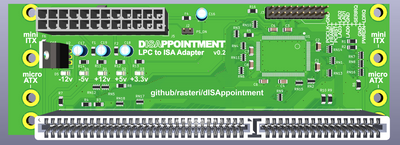Reply 160 of 511, by LSS10999
I'm currently experimenting with an ASUS Prime B450M-A which I've found its boardview somewhere. The board's SuperIO (IT8655E) is a very small one that do not have LDRQ#, so it is left unused and could be accessed from an unpopulated pull-up resistor pad according to its boardview, which makes it easier to bring it out by soldering a dupont wire there. However, it seems the boardview I got doesn't 100% reflect the actual board, as it has mentions of some additional parts that do not really exist.
I built a dISAppointment myself a while ago, but as I just tested with this motherboard, it doesn't appear to be working... my initialization program couldn't detect the F85226FG bridge after setting up the necessary parameters (got FFFFFFFF so nothing was found)... I did make an inspection on the adapter with a magnifier to ensure everything's soldered properly before... though I cannot be 100% sure. I wonder if there is any easy way to test whether the bridge chip is indeed functioning...
I'm using a small DC-ATX module which is connected to the main PSU's PCIe 6-pin connector using a 6-pin to 5525 converter cable, with the PSON header shorted using a jumper cap. I can confirm it's indeed supplying power to the adapter according to the voltage readings with a multimeter. As for the connection between the adapter to the board's TPM header, I have to use 2.0mm to 2.54mm dupont wires since the board's TPM header is 2.0mm in width.
I connected all the respective lines to the dISAppointment according to the board's TPM header definition, which seems to have all the lines other than LDRQ#, but I'm not sure which lines are really being used by a TPM, as it is indeed possible for the board to not really connect certain lines if it's not required for the TPM to function.
NOTE: It seems TPM_PD# (pin 13 on the board's TPM header, which I think should be mapped to PWRDN# on the adapter) is marked as NC on the boardview. Not sure if it's really needed, but if it is, should I be connecting it to a +3.3V in this case?


